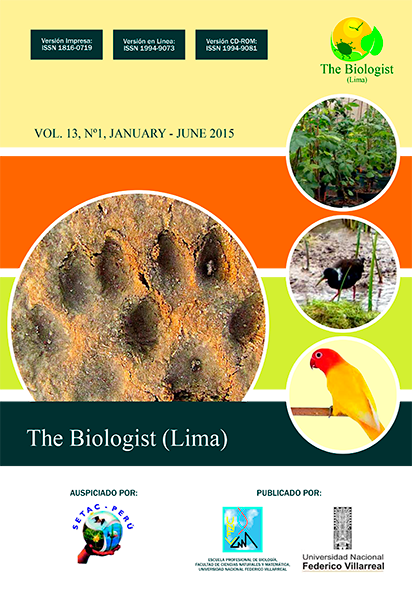BILATERAL GYNANDROMORPHY IN AGAPORNIS SP. (PSITTACIFORMES: PSITTACULIDAE)
DOI:
https://doi.org/10.24039/rtb2015131164Keywords:
Agapornis, Bilateral gynandromorphyAbstract
Bilateral gynandromorphy (BGA) is a rare state in which an individual exhibits both male and female traits. Gynandromorphy is exceptional in birds, but has been observed in a number of avian families, and is most commonly reported in the Passeriformes. The general pattern in BGA is female plumage characters on the left side and male characters on the right, corresponding to the orientation of the ovary and testis in birds. We documented observations of a bilateral gynandromorph in a captive love bird (Agapornis spp.), product of two forms: “lutino” (fischeri group), with yellow body, orange head, bright red bill, and bare white circunocular area x
“cremino” (roseicollis group), with white body, bill cream colored, no eyering. The bird exhibited the typical yellow and bright orange color of a lutino form on the right half of its body, and the white appearance of a cremino form on the right half, with red bill, and bare white circunocular area.
Downloads
Published
How to Cite
Issue
Section
License
Copyright (c) 2015 The Biologist

This work is licensed under a Creative Commons Attribution-NonCommercial-NoDerivatives 4.0 International License.
Objeto: El AUTOR-CEDENTE transfiere de manera TOTAL Y SIN LIMITACIÓN alguna al CESIONARIO (Revista The Biologist (Lima)) los derechos patrimoniales que le corresponden sobre sus obras por el tiempo que establezca la ley internacional. En virtud de lo anterior, se entiende que el CESIONARIO adquiere el derecho de reproducción en todas sus modalidades, incluso para inclusión audiovisual; el derecho de transformación o adaptación, comunicación pública, traducción, distribución y, en general, cualquier tipo de explotación que de las obras se pueda realizar por cualquier medio conocido o por conocer en el territorio nacional o internacional.
Remuneración: La cesión de los derechos patrimoniales de autor que mediante este contrato se hace será a título gratuito.
Condiciones y legitimidad de los derechos: El AUTOR-CEDENTE garantiza que es propietario integral de los derechos de explotación de la(s) obra(s) y en consecuencia garantiza que puede contratar y transferir los derechos aquí cedidos sin ningún tipo de limitación por no tener ningún tipo de gravamen, limitación o disposición. En todo caso, responderá por cualquier reclamo que en materia de derecho de autor se pueda presentar, exonerando de cualquier responsabilidad al CESIONARIO.
Licencia de acceso abierto: El AUTOR-CEDENTE autoriza que manuscrito publicado en la Revista Científica The Biologist (Lima) (versión Impresa ISSN 1816-0719, versión en línea ISSN 1994-9073) permanece disponible para su consulta pública en el sitio web http://revistas.unfv.edu.pe/index.php/rtb/index y en los diferentes sistemas de indexación y bases de datos en las que la revista tiene visibilidad, bajo la licencia Creative Commons, en la modalidad Reconocimiento-No comercial- Sin Trabajos derivados –aprobada en Perú, y por lo tanto son de acceso abierto. De ahí que los autores dan, sin derecho a retribución económica, a la Escuela Profesional de Biología, Facultad de Ciencias Naturales y Matemática de la Universidad Nacional Federico Villarreal (EPB - FCCNM - UNFV), los derechos de autor para la edición y reproducción a través de diferentes medios de difusión.









































